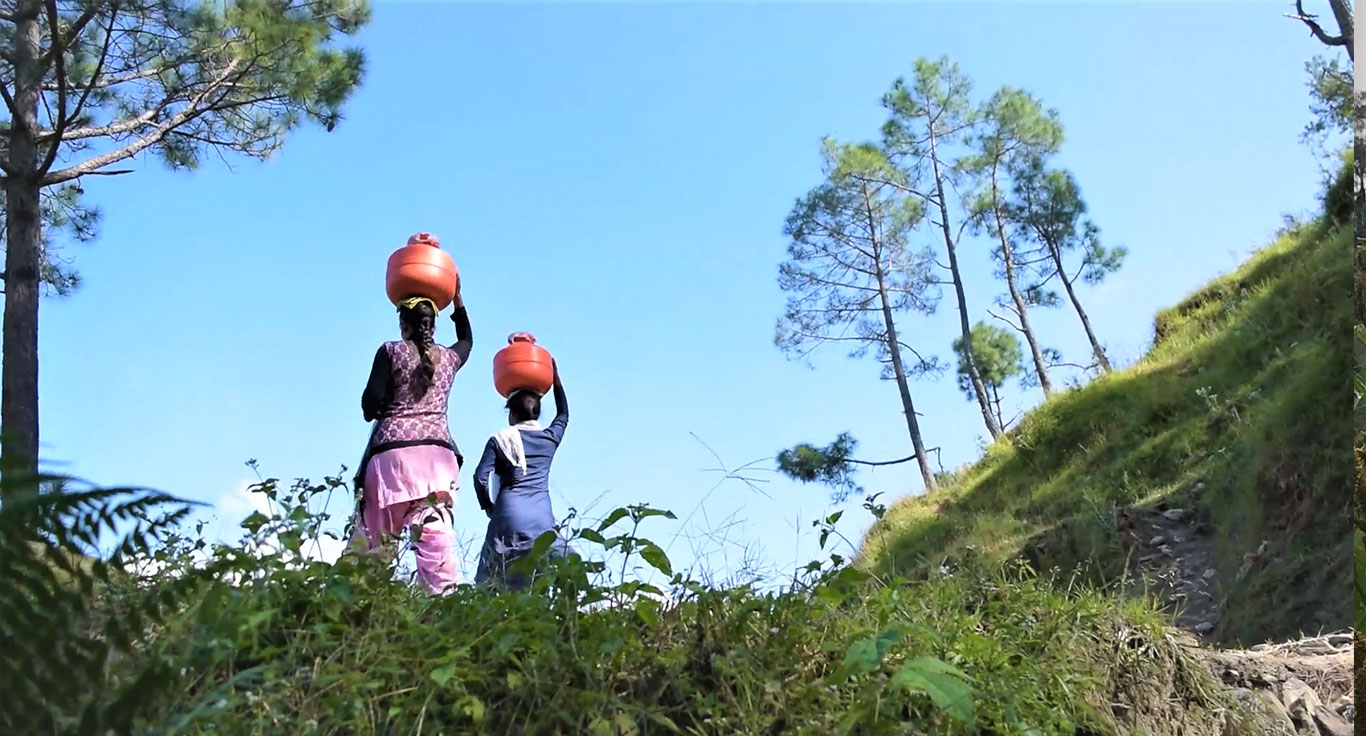
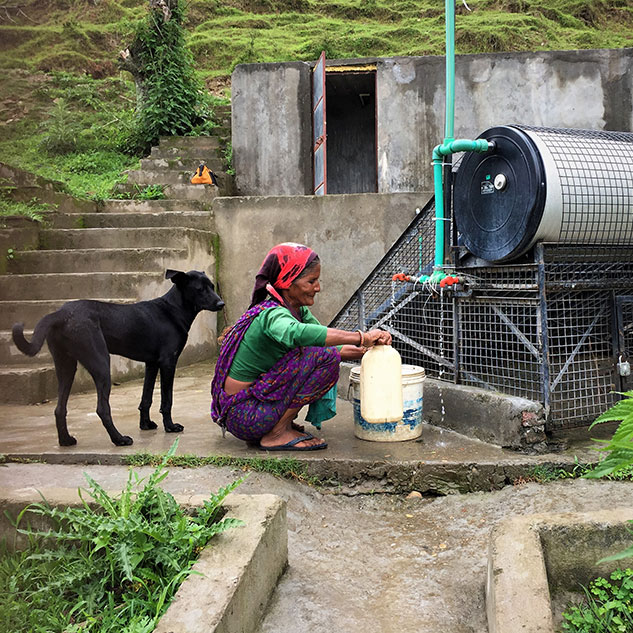
Civilization has always thrived and flourished around water. In the summer of 2019, Chitai Pant village had only one natural water source. The spring attracted a huge crowd of people queuing up to fill water and it would end up most of the time with people fighting for water and spending hours in the spring.
The water from the spring in the night was diverted to a separate tank of a capacity of 6.5 thousand liters thereby saving around 5.5 thousand liters per day. To date, 18 lakh liters have been saved. There is no queue at the spring, people have access to uninterrupted supply throughout the day. Kids spend time learning and doing other activities. Families have re-started their kitchen gardens. There has been no requirement for water tankers this year.
Water Management Projects
The water project started as a collective effort by the local villagers with everyone contributing their time for repair and maintenance. A major challenge in the upcoming years would be to store water in the monsoon which could be utilized in the summer when water is scarce.
The spring is looked after by the local community who carry out periodic cleaning and maintenance. The spring has helped the village to be self-dependent in terms of water availability and the excess water is now used for agricultural purposes.
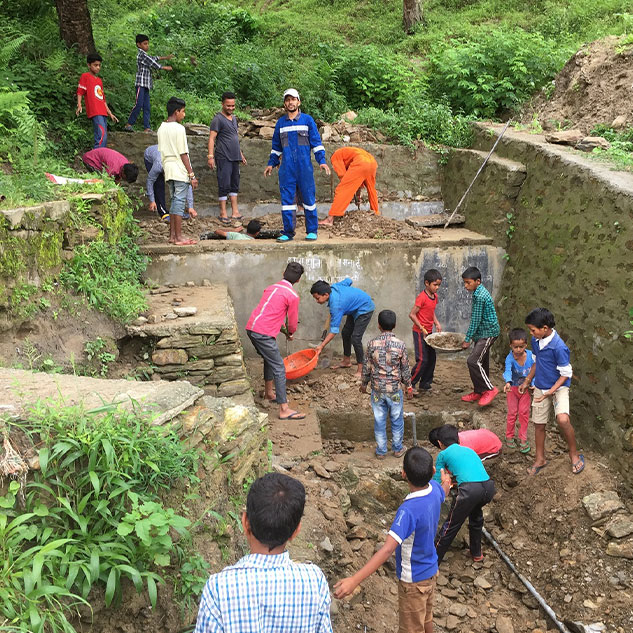
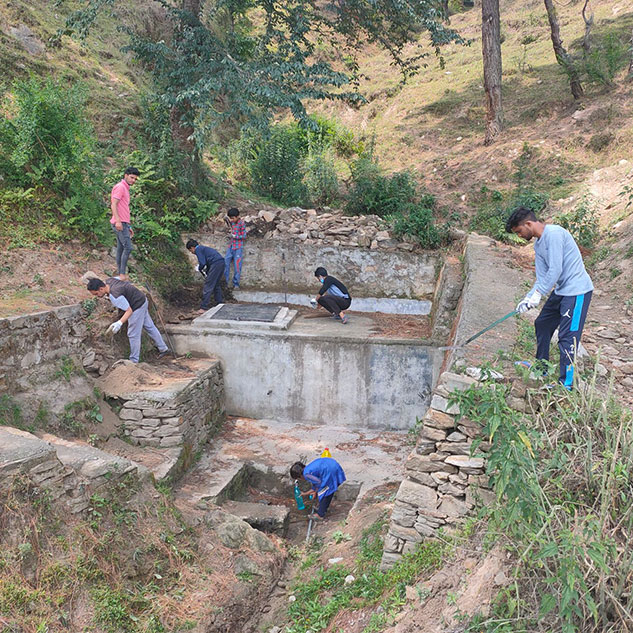

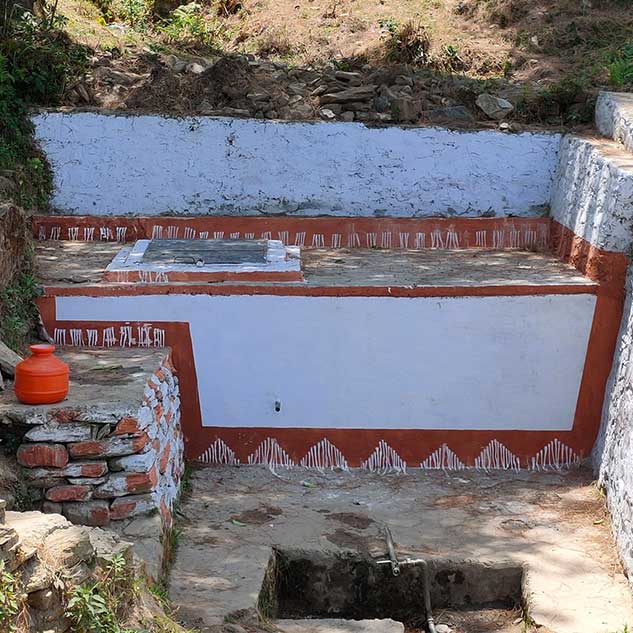
Water bodies have been considered sacred andthey were well-maintained by the mountain people. The traditional water management system showed a high degree of sustainability. In Uttarakhand, it is a common sight early in the morning to see women go to the spring to fill drinking water as during this time the water is known for its healing properties.
The “Maldhara” spring in Chitai Pant village serves more than five hundred people every daywith high quality mineral water which is stored in a water tank overnight and is used the nextday. The drinking water source is not disturbed by laundry or other polluting activities.
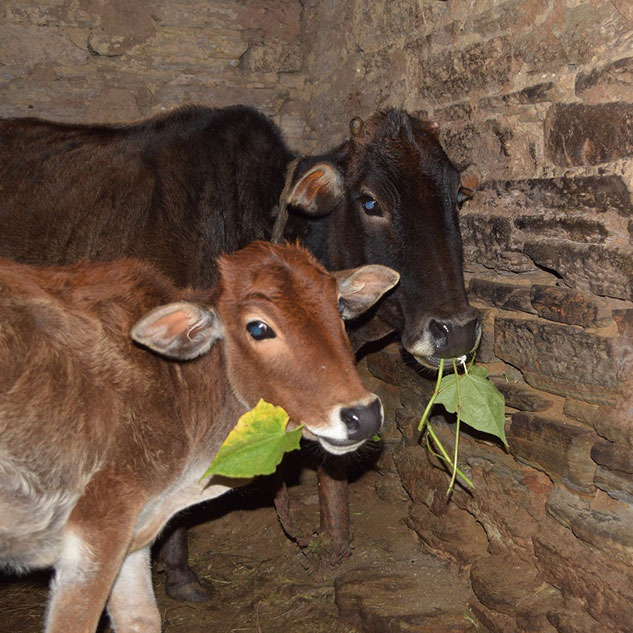
Animal husbandry is the second important ally for agricultural activity in the hill areas. Livestock rearing is a common practice in the hills, especially among marginal and small farmers who are actively engaged in agriculture. Milk, meat and other animal products are easily available in every household due to better infrastructure and transport. This however has reduced the dependency on cattle in every household thereby having negative impact on forest and traditional agricultural practices. Meadows have been overgrazed by sheep and goats.
Local indigenous cattle, the small“Badri” cow breed have been domesticated successfully for generations in the hills. They have however been replaced by high yielding milk cows, not realizing there isn’t enough fodder to meet their needs and most of them end up being abandoned on the street after a period of time.
Local villagers were educated on the importance of keeping and rearing local indigenous cattle for nutritional food security and to complement traditional agricultural practices.
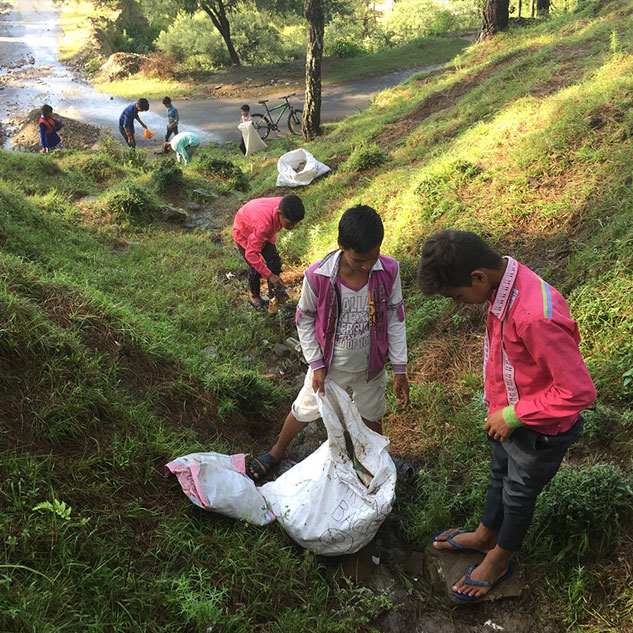
India generates 62 million tonnes of waste every year with an average annual growth rate of 4%.
The mountains are not untouched, there is a serious waste segregation issue at ground level and plastic has become an eyesore in the hills. Chitai village had plastic littered all around, glass bottles, thermocol dishes a common sight in the forest.
The children were exposed to the audiovisual program on “Swachh Bharat" and the need for a healthy lifestyle. Complete forest clean-up with the youth on bicycles. Burning drums were installed at common locations ensuring that the garbage burns at high temperatures., thereby creating a clean and healthy atmosphere and a sense of discipline and social responsibility amongst the locals towards their village.

Fields lying barren for almost a decade, villagers dependent on food supply from the market. No food nutritional security, malnourished kids. Lack of knowledge with traditional food crops. Education about the traditional prosperous agricultural system “Barahnaja" the 12-grain system was explained to the people as well as the importance of Cultural food identity. Understanding and realizing the importance of knowing the source of the food that they eat.
A large number of people went out into the fields, plowing and sowing traditional local seeds. The concept of a food garden in the adjoining fields around the house was fenced naturally. Seasonal vegetables, spices, herbs have been grown, ensuring nutritional food security.